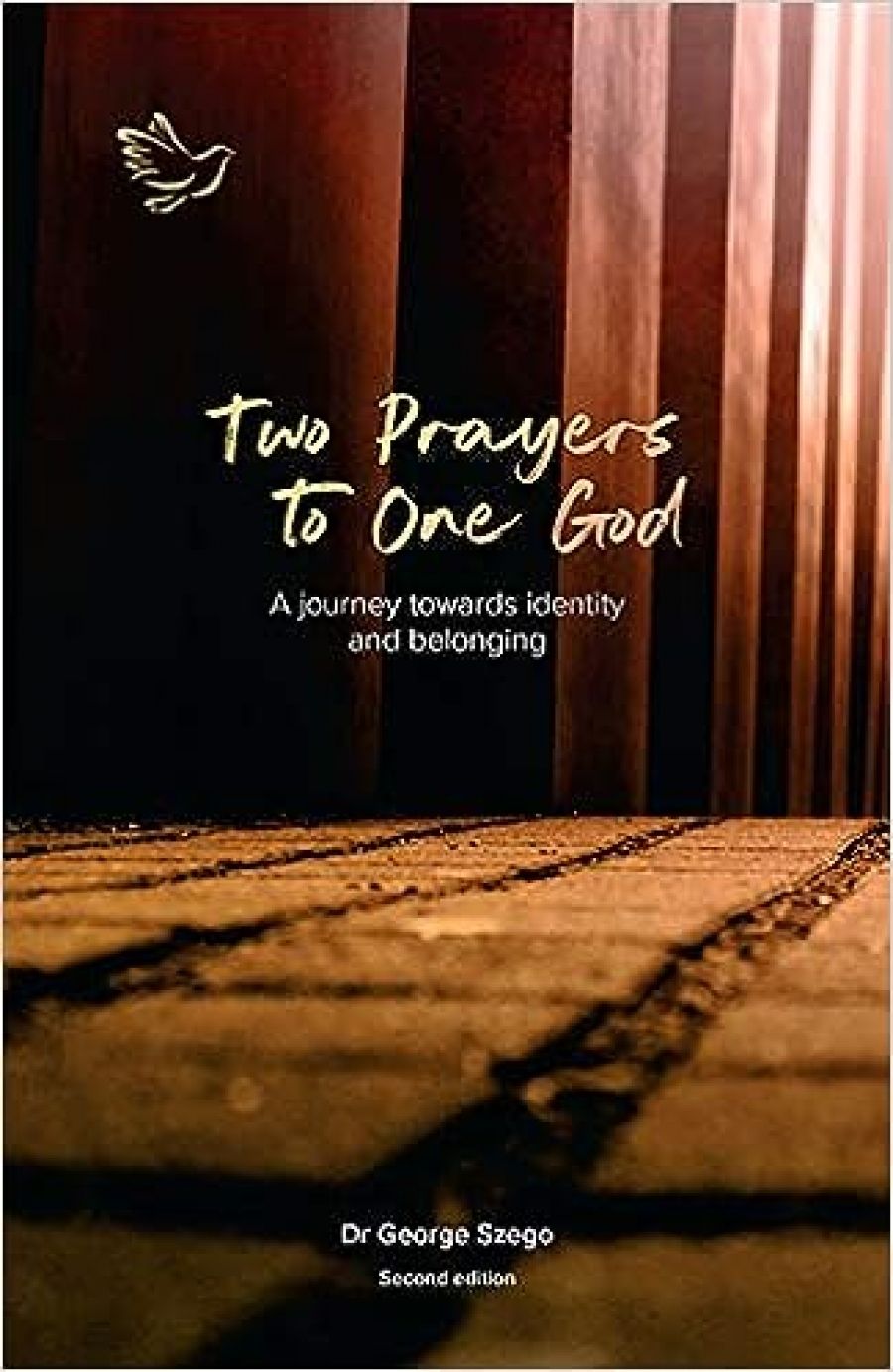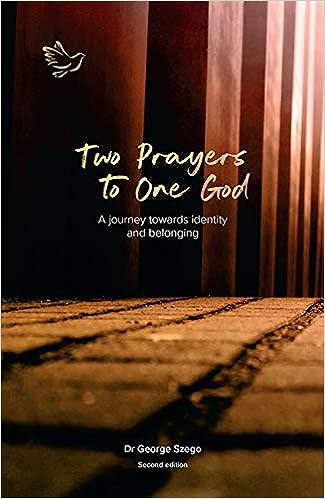
- Free Article: No
- Contents Category: Biography
- Review Article: Yes
- Article Title: The Terrible Sojourn
- Online Only: No
- Custom Highlight Text:
In March 1944, George Szego, a sixteen-year-old student in a provincial town, watched apprehensively as German troops replaced its Hungarian army posts. The massive deportations that ended in the near annihilation of Hungarian Jewry in the extermination camps and slave gangs of Eastern Europe were not long in coming. Szego had been christened a Roman Catholic. His Jewish parents converted in the 1920s at the height of anti-Semitic sentiment and prohibitions, mainly by reason of prudence and ambition, but also because of the genuine admiration that gifted and educated Jews often conceived for the great cultures that have – if only grudgingly – harboured them, an admiration that found uncustomary expression in Szego senior’s pride in his military exploits and his desire to be a ‘Christian gentleman’.
- Book 1 Title: Two Prayers to One God
- Book 1 Subtitle: A Journey towards Identity and Belonging
- Book 1 Biblio: Hardie Grant Books, $26.95 pb, 358 pp
- Book 1 Cover Small (400 x 600):

Szego’s father was a successful doctor in Mezobereny, a quiet town on the Great Hungarian Plain. Judging by everything Szego relates of him, he was clearly a man of talent, charm and prescience. He did not, however, foresee that the tempest of insane racism and destruction let loose in Germany would eventually blow into Hungary, nor how vaporous, in that circumstance, the attempted assimilation would turn out to be. When the Jews of Mezobereny were rounded up, as Jews were all over the countryside, and carted to the ghettos and to the railway cattle-cars marked ‘destination unknown’, the former neighbours drew their curtains or watched with indifference. Although there has been much gainsay and much bloodletting since, the Holocaust remains unique in many ways. It is a kind of limit or asymptote not only to savagery but to indifference and obduracy: on any relevant dimension, it exhausts imagination and there is nothing of evil that can be imagined beyond it. Primo Levi, who knew both the Inferno and Auschwitz with all his great clarity, simply said: ‘This is hell. Today, in our times, hell must be like this.’
Szego’s admirable book tells the story of a man who descended into this hell, survived the murder of family and friends, violent revolution and shattering dislocation, and went on to create from the pieces a generous life in a place very far from the home he loved. It is an extraordinary tale and no less extraordinary for the fact that it is the tale of so many other survivors. At its centre is the catastrophe whose presage coloured his childhood and continued more than fifty years later to echo in his life. The ominous journey and arrival at Auschwitz, and the terrible sojourn there, are described without hyperbole, and with the transparency of a child’s experience:
There was now total chaos within and without. Looking ahead, I saw a heavy, iron gate, on top of which bore the words ‘Arbeit Macht Frei’ (Work is Liberty). There were four strange-looking buildings a few kilometres behind where we stood. Each had quadrangle-shaped chimneys pouring black smoke into the sky. Well, I thought, this is an industrial area and we’ll no doubt be working in those factories … And then we arrived before the doctor. A man in stripes named him: Dr Mengele. I took in his face, his eyes and his elegant uniform. He looked at me with an expression both kind and ironic, smiled and – delicately but decisively – flicked his index finger to the right.
That was Szego’s first encounter with death. His mother, though not his grandmother and older relatives and friends, also survived that encounter, though he did not see her again. In the following months, Szego came near to perishing several times. Once, when starvation and disease had already staked their claim, an old medical friend of his father’s working in the camp, recognised his reduced frame and, riskily, sneaked him life-saving rations for a crucial while. When he was loaded onto the wheelbarrow used to collect the daily dead, an old school friend plucked him out and wafted him to safety. Szego calls these and similar events miracles, but I don’t think he is right. They were strokes of luck, not miracles. Luck we understand, miracles we don’t. It is evident that his own determination, amiability and perhaps even the susceptibility that marked his life after he was packed off to boarding school at the age of ten, and accustomed him to anxiety, played no small part in his survival.
However, the book is illuminated by a kind of miracle. It is a miracle that people who had been humiliated and terrified beyond understanding could resurrect themselves and regain a capacity for life. Szego states that: ‘No one really survived the Holocaust. The dead ones gaze at nothing in disbelief, as do those who retain their physiological functions.’ I am reluctant to dispute that. Even those of us in whom the Holocaust echoes are unfavourably placed to judge it. Certainly, it has killed people in the way Szego describes. It has so thoroughly undermined some people that the feeblest sensations of life became a menace to them, and they played dead to the world for fear of dying; it is quite true that the dead cannot die. But the evidence of this book, the record of a turbulent but creative life, refutes the bald assertion that there were no survivors.
Szego’s life after liberation, buoyed by relief and oblivion, are described as golden years: ‘I squeezed the Holocaust into a tiny chamber at the back of my mind. I was consciously happy.’ That condition was not to last. Without, there descended the darkness and oppression of the Stalinist era; within, the images of the camps and the figure of ‘the frightened little boy trudging into the cattle trains’ recurred with increasing frequency.
In Hungary, in these difficult years, Szego studied medicine and became a practising psychiatrist. But the harsh circumstances there, and his search for a Jewish identity which could reconcile the contradictions of his past and present, led him and his family to escape to Israel and then, eventually, to settle in Australia. The ghosts from the camps have not been stilled, but the struggle for identity and group belonging, unexpectedly thrust on the author as his mother sewed a yellow star to his jacket, appears to have been allayed.
Small things, the traces of a smile, a vanished gesture, are sometimes the marks of the deepest things. As the boy prisoner became separated from his family and friends, he glimpsed some of them, headed in the direction of the chimneys, looking back and waving to him. Fifty years later, the author still grieves that, in the pandemonium, he was unable to wave back. In this moving book, he waves back. It may be, as these recollections seem to suggest, especially when they dwell on happier seasons or a childhood home, that art can sometimes trump even the memory of terror and death.


Comments powered by CComment